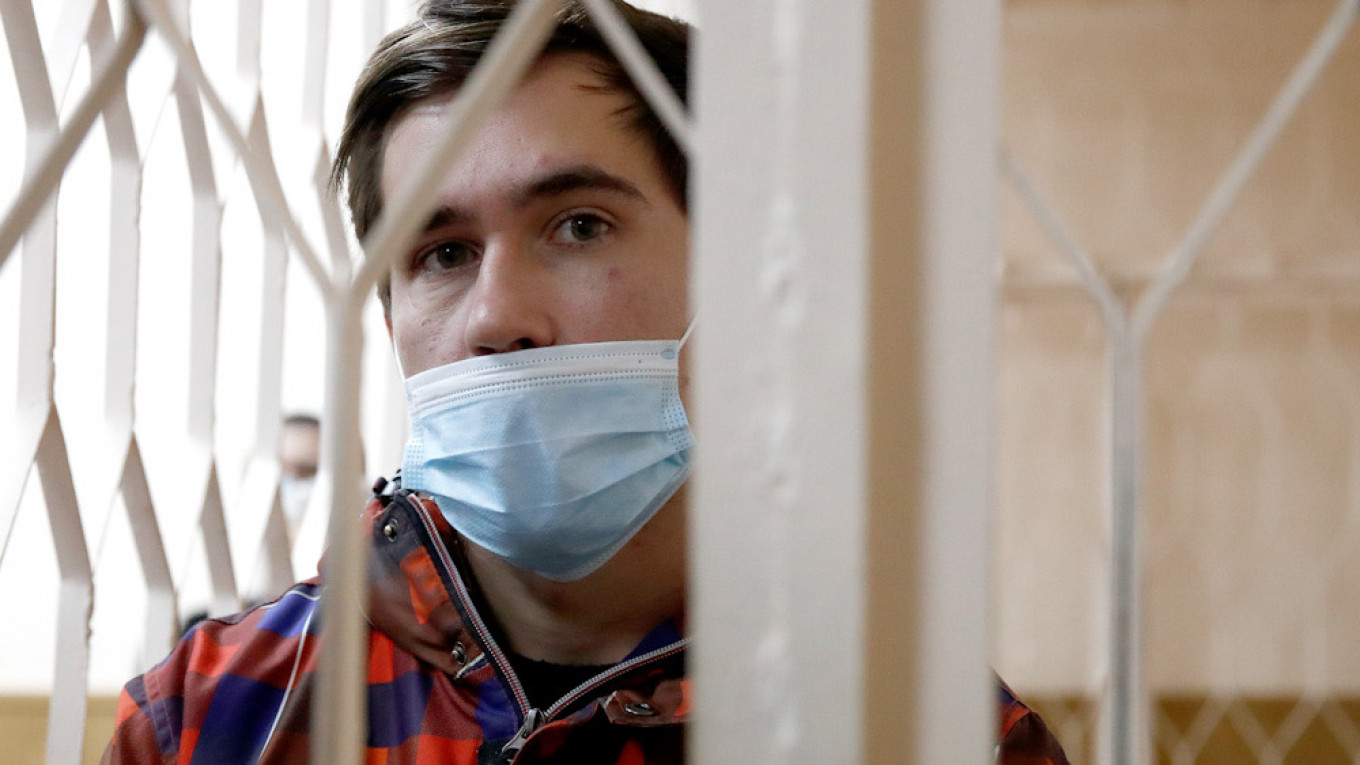
A Russian trash streamer was sentenced to six years in a maximum-security prison after the death of his pregnant girlfriend during a livestream that highlighted a disturbing online trend.
Viewers paid to see Valentina “Valya” Grigoryeva, 28, abused, with her suffering fatal injuries after being forced outside in subzero temperatures wearing only her underwear.
The case has drawn international attention, fueling outrage and prompting Russian lawmakers to push for stricter regulations on violent online content.
Incident captured live

Stanislav Reshetnyak, 30, better known by his online alias Reeflay, conducted livestreams in which he performed stunts for money.
In one of his December 2020 broadcasts, viewers paid him $1,000 to force Grigoryeva onto a freezing balcony at his home near Moscow.
The livestream, watched by thousands, continued even after her death.
Paramedics confirmed that Grigoryeva had died during the broadcast.
Reports from The Moscow Times and other outlets detailed her injuries, including traumatic brain injuries, cerebral hemorrhage, and numerous bruises.
While some initial reports suggested hypothermia as the cause of death, forensic examinations later revealed more extensive physical abuse.
In a moment captured on video, Reshetnyak was heard trying to wake Grigoryeva, repeatedly asking if she was alive.
“Valya, are you alive? Damn, you look like you are dead,” he said.

At one point, he attempted to justify his actions, claiming that he loved her, despite the visible evidence of abuse.
The Ramensky City Court convicted Reshetnyak of involuntary manslaughter, sentencing him to six years in a maximum-security prison colony.
The New York Post reported that further legal actions might be considered if additional forensic evidence emerges.

The alarming rise of trash streaming
Grigoryeva’s death is one of many incidents tied to a growing phenomenon in Russia known as trash streaming or “thrash streaming.”
This genre of online content involves creators engaging in humiliating, violent, or dangerous acts to gain viewers and earn money through donations.
One particularly shocking trend involves exploiting vulnerable individuals.
In another case earlier this year, a homeless man, Yuri Dushechkin, died during a livestream in Smolensk after consuming large amounts of vodka under pressure from viewers.
The livestream continued even as he lay unresponsive, as reported by Insider.
These events have drawn significant criticism from activists, lawmakers, and the public. Russian Senator Alexey Pushkov described trash streaming as a “dangerous and dehumanizing trend.”
In a series of tweets, Pushkov called for immediate action, stating, “A homeless man died during a thrash-stream session… Is it necessary to explain to someone else the need to legally ban thrash-streams? It is obvious to us.”
Lawmakers are now working on legislation to outlaw such content.
Vyacheslav Volodin, speaker of the lower house of parliament, pledged to introduce a bill criminalizing trash streaming, with penalties that could include jail time.
Activists demand accountability
Grigoryeva’s death has become a rallying cry for activists demanding stricter regulations on online platforms.
Feminist activist Liza Lazerson criticized YouTube and other platforms for allowing violent content to thrive while banning less harmful materials.
“YouTube prohibits the spread of nipples but allows scenes of violence and cruelty against women without issue,” Lazerson said.
“The woman dies on air, and the audience sends donations to the killer. This must stop.”
YouTube responded by removing Reshetnyak’s channel and any reuploads of the livestream.
“We’re shocked to learn of this tragic incident. This kind of graphic content is not acceptable on YouTube,” a spokesperson told Insider.
Despite this, critics argue that platforms must take more proactive measures to prevent such content from being hosted in the first place.

The broader impact of trash streaming
Trash streaming has grown in popularity due to its sensational nature.
Popular streamers, often operating on platforms like YouTube and Twitch, have gained thousands of followers by performing degrading stunts, often at the expense of others.
In some cases, homeless individuals have been coerced into participating in dangerous activities in exchange for small sums of money.
For example, Readovka reported that a YouTuber with over 25,000 subscribers routinely paid participants to drink vodka or eat hot sauce on camera.
These acts, while seemingly trivial, often lead to severe consequences, including injury or death.
While platforms like YouTube have policies against violent content, enforcement remains inconsistent.
Many trash streamers circumvent bans by using alternate accounts or moving their content to less regulated platforms.
Legislative action and the path forward
Grigoryeva’s case has intensified calls for legal reform in Russia.
The Federation Council, Russia’s upper house of parliament, has formed a working group to draft legislation aimed at eradicating trash streaming.
However, critics warn that simply banning the practice may not address its root causes.
The popularity of trash streaming reflects a broader societal issue, including the commodification of human suffering for entertainment and profit.
Lazerson and other advocates argue that platforms must take greater responsibility for the content they host.
“Until this is fixed, censorship is necessary,” Lazerson said, emphasizing the need for immediate action to protect vulnerable individuals.




